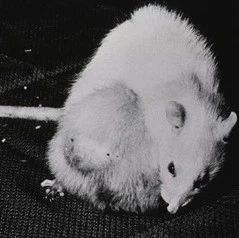
澳大利亚莫纳什大学下属的澳大利亚再生医学研究所的助理教授Tiziano Barberi与Isabella Mengarelli博士首次分离并纯化了可发育为眼睛晶状体的胚胎组织——晶状体上皮细胞(lens epithelium)。
研究人员进一步可将这些前体细胞分化成晶体细胞,这将为在实验室中进行药物人体组织试验提供新的平台。
多能干细胞具有在人体中分化为任何细胞的能力,包括皮肤、血液和脑物质。一旦干细胞开始分化,研究者面临的挑战就是如何控制分化的过程,获得自己想要的特定细胞。
使用一种叫做荧光激活细胞分离法(FACS,fluorescence activated cell sorting),研究者可以将晶状体上皮细胞上表达的蛋白质标志物分辨出来,从而将这些细胞从培养物中分离出来。
助理教授Barberi说,这些研究成果将来可能带来用于治疗先天性白内障或者严重晶状体损伤导致的视力缺陷,而无需进行晶状体移植。
“在一定程度上来说,晶状体在移植后能够很好地痊愈。但是对于先天性白内障来说,缺陷是存在于基因里的,因此即使进行晶状体移植,原来的问题还是会再次发生。这一问题在发展中给国家尤其普遍,”他说。而现在,研究者则可以在实验室中培养更像人类眼睛的晶状体。
“在培养皿中培养的晶状体细胞与人类眼睛的晶状体细胞在组织上存在差异。下一步要模拟更接近自然状态进行培养。”Barberi说。

 Derivation of Multiple Cranial Tissues and Isolation of Lens Epithelium-Like Cells From Human Embryonic Stem Cells
Derivation of Multiple Cranial Tissues and Isolation of Lens Epithelium-Like Cells From Human Embryonic Stem Cells
Isabella Mengarelli and Tiziano Barberi
Human embryonic stem cells (hESCs) provide a powerful tool to investigate early events occurring during human embryonic development. In the present study, we induced differentiation of hESCs in conditions that allowed formation of neural and non-neural ectoderm and to a lesser extent mesoderm. These tissues are required for correct specification of the neural plate border, an early embryonic transient structure from which neural crest cells (NCs) and cranial placodes (CPs) originate. Although isolation of CP derivatives from hESCs has not been previously reported, isolation of hESC-derived NC-like cells has been already described. We performed a more detailed analysis of fluorescence-activated cell sorting (FACS)-purified cell populations using the surface antigens previously used to select hESC-derived NC-like cells, p75 and HNK-1, and uncovered their heterogeneous nature. In addition to the NC component, we identified a neural component within these populations using known surface markers, such as CD15 and FORSE1. We have further exploited this information to facilitate the isolation and purification by FACS of a CP derivative, the lens, from differentiating hESCs. Two surface markers expressed on lens cells, c-Met/HGFR and CD44, were used for positive selection of multiple populations with a simultaneous subtraction of the neural/NC component mediated by p75, HNK-1, and CD15. In particular, the c-Met/HGFR allowed early isolation of proliferative lens epithelium-like cells capable of forming lentoid bodies. Isolation of hESC-derived lens cells represents an important step toward the understanding of human lens development and regeneration and the devising of future therapeutic applications.






